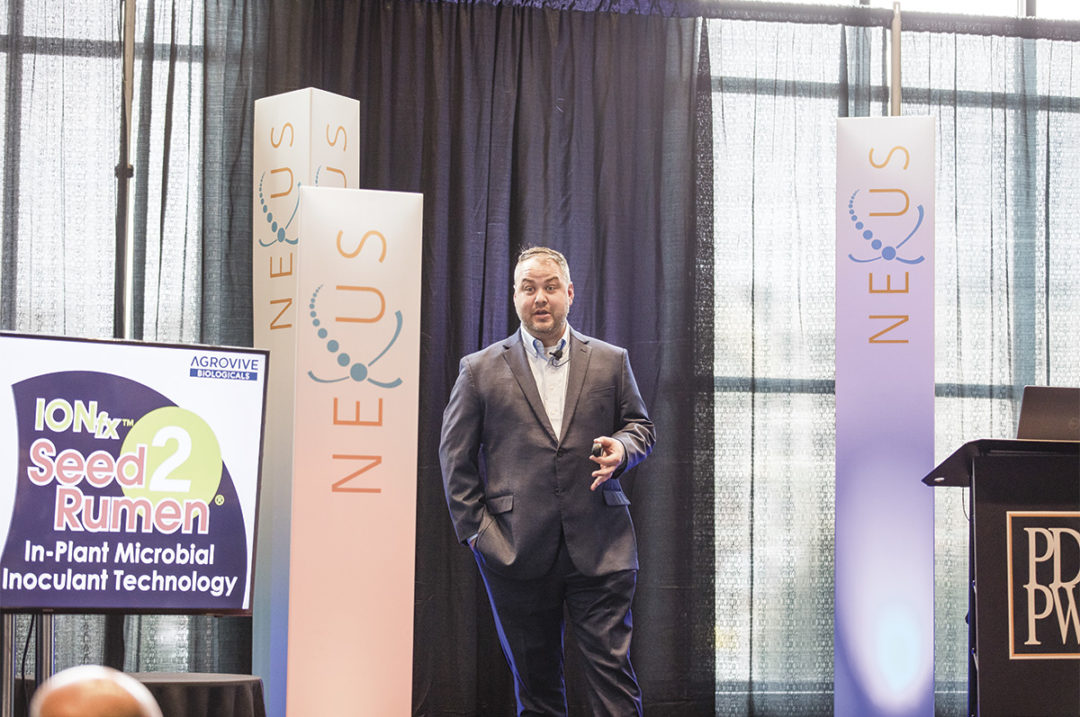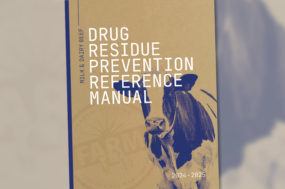A new seed treatment for use when planting corn for silage promises to increase total silage tonnage, with more of it being digestible, and decrease enteric methane emissions when the silage is fed. The technology is called Seed2Rumen and will be used while planting several dozen commercial test plots in the Midwest, Texas, California, Idaho and New York in 2024. Next year, the owner of the technology, South Dakota-based Agrovive Biologicals LLC, aims to have the product widely available through dealer distribution networks.
The seed treatment is applied during planting similar to how talc or graphite might be used to increase the flowability of corn seed in a corn planter. The product comes in a sealed foil pouch. One pouch treats 16 bags of corn seed, or 800 pounds of sorghum seed.
The powder-based product is packed with novel strains of microbes. These microbes get nested next to the seed during planting. The aerobic-loving microbes in the product get taken up into the plant, promoting photosynthetic growth. The anaerobic microbes in the product prefer to reside in the roots and assist in the uptake and transfer of nutrition available in the soil.
“In short, the end result is the plant is going to put on more vegetation prior to pollination, and then it’s going to concentrate more energy and effort toward starch fill after pollination,” says Nathan Hrnicek, chief operating officer for Agrovive Biologicals.
More than 300 million pounds of milk have been produced from cows fed forages grown with the new product. Producers who trialed the product last year noticed three in-season results from using the microbes. First, corn plants germinate better and lead to higher plant stand counts – from 300 to 500 extra plants per acre. Second, growers notice less purpling of corn in the early season. Hrnicek says that’s due to a better phosphorus balance in the plant. That proper balance also leads to wider pathways for nutrient transport in the plant all season long. Finally, the in-plant microbes modulate the pH at a cellular level, and that leads to increased growing degree units accumulation.
“Typically, a corn plant switches from photosynthesis to photorespiration at around 86 degrees Fahrenheit to 88 degrees Fahrenheit,” Hrnicek says. “During photorespiration, a plant begins to play defense and you see this visibly by curled leaves. With our product in use, the microbes force the plant to stay on offense longer – up into the 90s. That leads to the accumulation of growing degrees; a bigger, more robust plant; and more starch in the kernels.”
The company says its trials show the bigger plants have thicker stalks, but they aren’t thicker with undigestible lignin but rather digestible fiber. Dairies that have more silage tonnage (about a 1.5-ton-per-acre increase) that is still digestible (about a 1.5-point increase in NDFd and a 2.5- to 3-point increase in 7-hour starch digestibility) gain options for how to improve their operation’s profitability. Hrnicek says dairies with permission to ship more milk can see higher milk yields from feeding silage grown with their product – up to 5 pounds. Other dairies who’ve tried the product and can’t ship more milk are reducing cost by feeding more homegrown silage – up to 10 cents per cow per head per day of savings, Hrnicek says.
All of these benefits were those discovered after chasing the original goal of using in-plant microbes with corn for silage to decrease enteric methane emissions in the rumen. Research to quantify that effect of the product is still forthcoming, but so far anecdotally it seems to be working.
“We know we are reducing methanogen loading in the plant by about 50 percent in our silage crops,” Hrnicek says. “Of course, if you have fewer methanogens coming into the rumen, you're gonna have less production in the rumen while the cows are digesting that feed.”
Dairies with digesters may hear this and be concerned if using the product could decrease methane production in the digester. Hrnicek says the opposite is what early adopters have observed.
“The fewer methanogens that are in the plant and coming into the cow are going to be lethargic, is maybe the best way to describe them,” Hrnicek says. “One of the byproducts we’ve seen from our silage is fewer solids and shorter fibers coming out of the backside of the cow. For farms using digesters, this had an increase in methane production. It seems those lethargic methanogens leave the rumen and when they get into the digester, they wake up and know it’s time to go to work.”
More than 30,000 acres are enrolled in the company’s commercial research program in 2024.
“We’re very ambitious, and we want to work to help improve the profitability of dairy farms,” Hrnicek says. “Our goal is to have 150,000 animals being fed silage treated with our product at the end of the 2025 growing season.”






